Tag #why
317 papers:
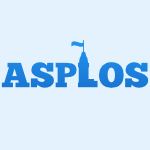 ASPLOS-2020-0002PJ #how #performance
ASPLOS-2020-0002PJ #how #performance- Why GPUs are Slow at Executing NFAs and How to Make them Faster (HL0, SP, AJ), pp. 251–265.
 EDM-2019-DingL
EDM-2019-DingL - Why Deep Knowledge Tracing has less Depth than Anticipated (XD, ECL).
 CHI-PLAY-2019-CaiWF #game studies #online
CHI-PLAY-2019-CaiWF #game studies #online- Who Purchases and Why?: Explaining Motivations for In-game Purchasing in the Online Survival Game Fortnite (JC, DYW, GF), pp. 391–396.
 CHI-PLAY-2019-WohnJESSD #comprehension #people #question
CHI-PLAY-2019-WohnJESSD #comprehension #people #question- Understanding Digital Patronage: Why Do People Subscribe to Streamers on Twitch? (DYW, PJ, PE, JSSJ, MS, PD), pp. 99–110.
 ICML-2019-BrutzkusG #modelling #problem
ICML-2019-BrutzkusG #modelling #problem- Why do Larger Models Generalize Better? A Theoretical Perspective via the XOR Problem (AB, AG), pp. 822–830.
 ESEC-FSE-2019-DavisMCSL #empirical #regular expression
ESEC-FSE-2019-DavisMCSL #empirical #regular expression- Why aren't regular expressions a lingua franca? an empirical study on the re-use and portability of regular expressions (JCD, LGMI, CAC, FS, DL), pp. 443–454.
- ICSE-2019-AlamiCW #code review #community #open source #overview #question
- Why does code review work for open source software communities? (AA, MLC, AW), pp. 1073–1083.
- ICSE-2019-BarcombSR0 #community #question #volunteer
- Why do episodic volunteers stay in FLOSS communities? (AB, KJS, DR, BF0), pp. 948–954.
 ICST-2019-BorgesZ #automation #resource management
ICST-2019-BorgesZ #automation #resource management- Why Does this App Need this Data? Automatic Tightening of Resource Access (NPBJ, AZ), pp. 449–456.
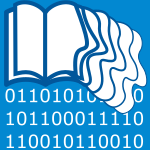 JCDL-2018-Strasser #communication #matter #open source
JCDL-2018-Strasser #communication #matter #open source- Open Source Tech for Scholarly Communication: Why It Matters (CS), p. 5.
 ICSME-2018-SawantHVSB #motivation
ICSME-2018-SawantHVSB #motivation- Why are Features Deprecated? An Investigation Into the Motivation Behind Deprecation (AAS, GH, GV, SS, AB), pp. 13–24.
 MSR-2018-WangLL0X #android #empirical #game studies #scalability
MSR-2018-WangLL0X #android #empirical #game studies #scalability- Why are Android apps removed from Google Play?: a large-scale empirical study (HW, HL, LL0, YG0, GX), pp. 231–242.
 SANER-2018-BritoXHV #api #developer #how #java
SANER-2018-BritoXHV #api #developer #how #java- Why and how Java developers break APIs (AB, LX, ACH, MTV), pp. 255–265.
 CHI-PLAY-2018-Ferguson #game studies
CHI-PLAY-2018-Ferguson #game studies- Sex, Lies and Videogames: Why Videogames Still Struggle to Overcome Moral Panic (CJF), p. 1.
 DiGRA-2018-Gianmarco #game studies
DiGRA-2018-Gianmarco #game studies- Quilting the meaning: gameplay as catalyst of signification and why to co-op in game studies (TGG).
 DiGRA-2018-ToftedahlBE #game studies #how #locality #question
DiGRA-2018-ToftedahlBE #game studies #how #locality #question- Localization from an Indie Game Production Perspective - Why, When and How? (MT, PB, HE).
 FDG-2018-KumariDK #design #game studies
FDG-2018-KumariDK #design #game studies- Why game designers should study magic (SK, SD, GK), p. 8.
 VS-Games-2018-RappNL #artificial reality #overview
VS-Games-2018-RappNL #artificial reality #overview- The Impact of Pokémon Go and Why It's Not about Augmented Reality - Results from a Qualitative Survey (DR, FN, MEL), pp. 1–2.
 POPL-2018-MajumdarN #debugging #effectiveness #question #random testing #testing
POPL-2018-MajumdarN #debugging #effectiveness #question #random testing #testing- Why is random testing effective for partition tolerance bugs? (RM, FN), p. 24.
- ICSE-2018-SpadiniASBB #code review #developer #how #overview #testing
- When testing meets code review: why and how developers review tests (DS, MFA, MADS, MB, AB), pp. 677–687.
- ICSE-2018-VendomeGPBVP #debugging #matter
- To distribute or not to distribute?: why licensing bugs matter (CV, DMG, MDP, GB, MLV, DP), pp. 268–279.
 IJCAR-2018-MelquiondR #algorithm #framework #proving
IJCAR-2018-MelquiondR #algorithm #framework #proving- A Why3 Framework for Reflection Proofs and Its Application to GMP's Algorithms (GM, RRH), pp. 178–193.
 EDM-2017-HuRB #standard
EDM-2017-HuRB #standard- Why data standards are critical for EDM and AIED (XH, RR, AB).
 SANER-2017-XavierHV #api #developer
SANER-2017-XavierHV #api #developer- Why do we break APIs? First answers from developers (LX, ACH, MTV), pp. 392–396.
 ICML-2017-OsbandR #learning #question
ICML-2017-OsbandR #learning #question- Why is Posterior Sampling Better than Optimism for Reinforcement Learning? (IO, BVR), pp. 2701–2710.
 KDD-2017-JohariKPW #matter #testing #what
KDD-2017-JohariKPW #matter #testing #what- Peeking at A/B Tests: Why it matters, and what to do about it (RJ, PK, LP, DW0), pp. 1517–1525.
 MoDELS-2017-MaozPRS #component #question #satisfiability #specification
MoDELS-2017-MaozPRS #component #question #satisfiability #specification- Why is My Component and Connector Views Specification Unsatisfiable? (SM, NP, JOR, RS), pp. 134–144.
 OOPSLA-2017-CogumbreiroSMSV #concurrent #parallel #source code
OOPSLA-2017-CogumbreiroSMSV #concurrent #parallel #source code- Deadlock avoidance in parallel programs with futures: why parallel tasks should not wait for strangers (TC, RS, FM, VS, VTV, MG), p. 26.
 ASE-2017-TomasdottirAD #developer #how #javascript
ASE-2017-TomasdottirAD #developer #how #javascript- Why and how JavaScript developers use linters (KFT, MFA, AvD), pp. 578–589.
 ESEC-FSE-2017-AbdalkareemNWMS #case study #developer #empirical
ESEC-FSE-2017-AbdalkareemNWMS #case study #developer #empirical- Why do developers use trivial packages? an empirical case study on npm (RA, ON, SW, SM, ES), pp. 385–395.
 ESEC-FSE-2017-CoelhoV #open source
ESEC-FSE-2017-CoelhoV #open source- Why modern open source projects fail (JC, MTV), pp. 186–196.
 ESEC-FSE-2017-NelsonDDK #power of
ESEC-FSE-2017-NelsonDDK #power of- The power of “why” and “why not”: enriching scenario exploration with provenance (TN, ND, DJD, SK), pp. 106–116.
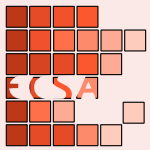 ECSA-2016-RostN #architecture #developer #documentation #effectiveness
ECSA-2016-RostN #architecture #developer #documentation #effectiveness- Task-Specific Architecture Documentation for Developers - Why Separation of Concerns in Architecture Documentation is Counterproductive for Developers (DR, MN), pp. 102–110.
 ICSME-2016-ShimagakiKMPU #case study #commit #comparative #industrial #open source
ICSME-2016-ShimagakiKMPU #case study #commit #comparative #industrial #open source- Why are Commits Being Reverted?: A Comparative Study of Industrial and Open Source Projects (JS, YK, SM, DP, NU), pp. 301–311.
- IFM-2016-AmeriF #verification
- Why Just Boogie? - Translating Between Intermediate Verification Languages (MA, CAF), pp. 79–95.
 CIKM-2016-OuCC #question
CIKM-2016-OuCC #question- Influence Maximization for Complementary Goods: Why Parties Fail to Cooperate? (HCO, CKC, MSC), pp. 1713–1722.
 CIKM-2016-TsukudaHG #modelling #order
CIKM-2016-TsukudaHG #modelling #order- Why Did You Cover That Song?: Modeling N-th Order Derivative Creation with Content Popularity (KT, MH, MG), pp. 2239–2244.
 ICML-2016-ArpitZNG #question #representation
ICML-2016-ArpitZNG #question #representation- Why Regularized Auto-Encoders learn Sparse Representation? (DA, YZ, HQN0, VG), pp. 136–144.
 ICML-2016-Shalev-ShwartzW #how
ICML-2016-Shalev-ShwartzW #how- Minimizing the Maximal Loss: How and Why (SSS, YW), pp. 793–801.
 ICML-2016-SimsekAK #problem
ICML-2016-SimsekAK #problem- Why Most Decisions Are Easy in Tetris - And Perhaps in Other Sequential Decision Problems, As Well (ÖS, SA, AK), pp. 1757–1765.
 KDD-2016-Ribeiro0G #classification #predict #quote #trust
KDD-2016-Ribeiro0G #classification #predict #quote #trust- “Why Should I Trust You?”: Explaining the Predictions of Any Classifier (MTR, SS0, CG), pp. 1135–1144.
 AdaEurope-2016-Burns #ada #physics #power of #programming language
AdaEurope-2016-Burns #ada #physics #power of #programming language- Why the Expressive Power of Programming Languages Such as Ada Is Needed for Future Cyber Physical Systems (AB), pp. 3–11.
 FSE-2016-Herbsleb #coordination #how #research
FSE-2016-Herbsleb #coordination #how #research- Building a socio-technical theory of coordination: why and how (outstanding research award) (JDH), pp. 2–10.
 FSE-2016-SilvaTV #git
FSE-2016-SilvaTV #git- Why we refactor? confessions of GitHub contributors (DS, NT, MTV), pp. 858–870.
- ICSE-2016-NadiKMB #api #developer #encryption #java #question
- Jumping through hoops: why do Java developers struggle with cryptography APIs? (SN, SK, MM, EB), pp. 935–946.
 ICST-2016-HammoudiRT #question #testing #web
ICST-2016-HammoudiRT #question #testing #web- Why do Record/Replay Tests of Web Applications Break? (MH, GR, PT), pp. 180–190.
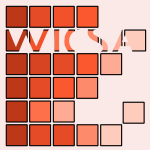 WICSA-2015-NaabBLHEMCK #architecture #case study #design #ecosystem #experience #mobile #prototype #scalability
WICSA-2015-NaabBLHEMCK #architecture #case study #design #ecosystem #experience #mobile #prototype #scalability- Why Data Needs more Attention in Architecture Design — Experiences from Prototyping a Large-Scale Mobile App Ecosystem (MN, SB, TL, SH, AE, DM, RC, FK), pp. 75–84.
 JCDL-2015-ChenSTL #question #social #social media
JCDL-2015-ChenSTL #question #social #social media- Why Do Social Media Users Share Misinformation? (XC, SCJS, YLT, CSL), pp. 111–114.
 SIGMOD-2015-CSKZYRPAKDRD #big data #industrial #what
SIGMOD-2015-CSKZYRPAKDRD #big data #industrial #what- Why Big Data Industrial Systems Need Rules and What We Can Do About It (PSGC, CS, KGK, HZ, FY, NR, SP, EA, GK, RD, VR, AD), pp. 265–276.
 EDM-2015-Rau #equation #how #learning
EDM-2015-Rau #equation #how #learning- Why Do the Rich Get Richer? A Structural Equation Model to Test How Spatial Skills Affect Learning with Representations (MAR), pp. 350–357.
 ICSME-2015-CodobanRDB #case study #developer #how #lens
ICSME-2015-CodobanRDB #case study #developer #how #lens- Software history under the lens: A study on why and how developers examine it (MC, SSR, DD, BB), pp. 1–10.
 ICSME-2015-NittaM #abstraction
ICSME-2015-NittaM #abstraction- Delta extraction: An abstraction technique to comprehend why two objects could be related (NN, TM), pp. 61–70.
 ICSME-2015-VendomeVBPGP #developer
ICSME-2015-VendomeVBPGP #developer- When and why developers adopt and change software licenses (CV, MLV, GB, MDP, DMG, DP), pp. 31–40.
 MSR-2015-LinW #fine-grained
MSR-2015-LinW #fine-grained- Why Power Laws? An Explanation from Fine-Grained Code Changes (ZL, JW), pp. 68–75.
 MSR-2015-SlagWB #stack overflow
MSR-2015-SlagWB #stack overflow- One-Day Flies on StackOverflow — Why the Vast Majority of StackOverflow Users Only Posts Once (RS, MdW, AB), pp. 458–461.
 SANER-2015-AmmerlaanVZ #refactoring
SANER-2015-AmmerlaanVZ #refactoring- Old habits die hard: Why refactoring for understandability does not give immediate benefits (EA, WV, AZ), pp. 504–507.
 SANER-2015-Mirakhorli #architecture #how #question #re-engineering #what
SANER-2015-Mirakhorli #architecture #how #question #re-engineering #what- Software architecture reconstruction: Why? What? How? (MM), p. 595.
 CHI-2015-CramerJ #communication #question #what
CHI-2015-CramerJ #communication #question #what- Couples’ Communication Channels: What, When & Why? (HC, MLJ), pp. 709–712.
 CHI-2015-GanglbauerFG #what
CHI-2015-GanglbauerFG #what- Why and what did we throw out?: Probing on Reflection through the Food Waste Diary (EG, GF, FG), pp. 1105–1114.
 CHI-2015-ZhangAK #how #question #what
CHI-2015-ZhangAK #how #question #what- Mailing Lists: Why Are They Still Here, What’s Wrong With Them, and How Can We Fix Them? (AXZ, MSA, DRK), pp. 4009–4018.
 CSCW-2015-MatthiesenB #development #framework #legacy #perspective
CSCW-2015-MatthiesenB #development #framework #legacy #perspective- Why Replacing Legacy Systems Is So Hard in Global Software Development: An Information Infrastructure Perspective (SM, PB), pp. 876–890.
 HCI-UC-2015-Obwegeser #development #matter
HCI-UC-2015-Obwegeser #development #matter- Entrepreneurial IS Development: Why Techniques Matter and Methods Don’t (NO), pp. 218–225.
 SCSM-2015-MillsF #effectiveness #framework #how #platform
SCSM-2015-MillsF #effectiveness #framework #how #platform- A Computational Study of How and Why reddit.com was an Effective Platform in the Campaign Against SOPA (RM, AF), pp. 229–241.
 KDD-2015-RongCM #identification #modelling #social
KDD-2015-RongCM #identification #modelling #social- Why It Happened: Identifying and Modeling the Reasons of the Happening of Social Events (YR, HC, ZM), pp. 1015–1024.
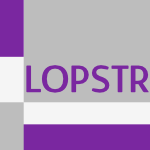 LOPSTR-2015-AmadiniGM #challenge
LOPSTR-2015-AmadiniGM #challenge- Why CP Portfolio Solvers Are (under)Utilized? Issues and Challenges (RA, MG, JM), pp. 349–364.
 ESEC-FSE-2015-BellerGPZ #developer #how #ide
ESEC-FSE-2015-BellerGPZ #developer #how #ide- When, how, and why developers (do not) test in their IDEs (MB, GG, AP, AZ), pp. 179–190.
 ICSE-v1-2015-LavalleeR #case study #developer #quality
ICSE-v1-2015-LavalleeR #case study #developer #quality- Why Good Developers Write Bad Code: An Observational Case Study of the Impacts of Organizational Factors on Software Quality (ML, PNR), pp. 677–687.
 ICSE-v1-2015-TufanoPBOPLP #smell
ICSE-v1-2015-TufanoPBOPLP #smell- When and Why Your Code Starts to Smell Bad (MT, FP, GB, RO, MDP, ADL, DP), pp. 403–414.
 HT-2014-TanakaTT #classification #twitter
HT-2014-TanakaTT #classification #twitter- Why you follow: a classification scheme for twitter follow links (AT, HT, KT), pp. 324–326.
 VLDB-2014-AlucOD #database #design #matter #rdf
VLDB-2014-AlucOD #database #design #matter #rdf- Workload Matters: Why RDF Databases Need a New Design (GA, MTÖ, KD), pp. 837–840.
 ITiCSE-2014-BainB #programming #question
ITiCSE-2014-BainB #programming #question- Why is programming so hard to learn? (GB, IB), p. 356.
 ICSME-2014-KerzaziKA #automation #empirical
ICSME-2014-KerzaziKA #automation #empirical- Why Do Automated Builds Break? An Empirical Study (NK, FK, BA), pp. 41–50.
 SCAM-2014-LozanoNJ
SCAM-2014-LozanoNJ - Explaining Why Methods Change Together (AL, CN, VJ), pp. 185–194.
 ICALP-v1-2014-IaconoO
ICALP-v1-2014-IaconoO - Why Some Heaps Support Constant-Amortized-Time Decrease-Key Operations, and Others Do Not (JI, ÖÖ), pp. 637–649.
 CHI-2014-BensonK #how #web #what
CHI-2014-BensonK #how #web #what- End-users publishing structured information on the web: an observational study of what, why, and how (EB, DRK), pp. 1265–1274.
 CHI-2014-Schoenebeck #how #social #social media #twitter
CHI-2014-Schoenebeck #how #social #social media #twitter- Giving up Twitter for Lent: how and why we take breaks from social media (SYS), pp. 773–782.
 CHI-2014-ShayIRC #case study #experience #quote
CHI-2014-ShayIRC #case study #experience #quote- “My religious aunt asked why i was trying to sell her viagra”: experiences with account hijacking (RS, II, RWR, SC), pp. 2657–2666.
 CSCW-2014-XiaoWM #development #security #social #tool support
CSCW-2014-XiaoWM #development #security #social #tool support- Social influences on secure development tool adoption: why security tools spread (SX, JW, ERMH), pp. 1095–1106.
 ICEIS-v1-2014-Dietz #enterprise
ICEIS-v1-2014-Dietz #enterprise- Why ERP Systems Will Keep Failing (JLGD), p. IX.
 KDD-2014-BarbieriBM #predict
KDD-2014-BarbieriBM #predict- Who to follow and why: link prediction with explanations (NB, FB, GM), pp. 1266–1275.
 HILT-2014-BaggeH #algebra #api #specification
HILT-2014-BaggeH #algebra #api #specification- Specification of generic APIs, or: why algebraic may be better than pre/post (AHB, MH), pp. 71–80.
 VLDB-2013-Bress #gpu #hybrid #performance #query
VLDB-2013-Bress #gpu #hybrid #performance #query- Why it is time for a HyPE: A Hybrid Query Processing Engine for Efficient GPU Coprocessing in DBMS (SB), pp. 1398–1403.
 ITiCSE-2013-KnoxF #matter #question
ITiCSE-2013-KnoxF #matter #question- Why does place matter? (DK, SF), pp. 171–176.
 ITiCSE-2013-Kurkovsky #mobile #question
ITiCSE-2013-Kurkovsky #mobile #question- Mobile computing and robotics in one course: why not? (SK), pp. 64–69.
 MSR-2013-AllamanisS #stack overflow #topic #what
MSR-2013-AllamanisS #stack overflow #topic #what- Why, when, and what: analyzing stack overflow questions by topic, type, and code (MA, CAS), pp. 53–56.
 MSR-2013-ShokripourAKZ #debugging #recommendation
MSR-2013-ShokripourAKZ #debugging #recommendation- Why so complicated? simple term filtering and weighting for location-based bug report assignment recommendation (RS, JA, ZMK, SZ), pp. 2–11.
 CHI-2013-KangBK #design #internet #people #policy
CHI-2013-KangBK #design #internet #people #policy- Why do people seek anonymity on the internet?: informing policy and design (RK, SB, SBK), pp. 2657–2666.
 CHI-2013-MarcuTCGRSDK #comprehension #education
CHI-2013-MarcuTCGRSDK #comprehension #education- Why do they still use paper?: understanding data collection and use in Autism education (GM, KT, QC, JG, GR, KJS, AKD, SBK), pp. 3177–3186.
 CHI-2013-RauARR #design #interactive #learning
CHI-2013-RauARR #design #interactive #learning- Why interactive learning environments can have it all: resolving design conflicts between competing goals (MAR, VA, NR, SR), pp. 109–118.
 CSCW-2013-BuhlerNH #chat #how #video
CSCW-2013-BuhlerNH #chat #how #video- How and why teenagers use video chat (TB, CN, SH), pp. 759–768.
 CSCW-2013-JacksonSB #policy
CSCW-2013-JacksonSB #policy- Why CSCW needs science policy (and vice versa) (SJJ, SBS, AGB), pp. 1113–1124.
 DUXU-WM-2013-Lopez-OrnelasAZ #interface #question #web
DUXU-WM-2013-Lopez-OrnelasAZ #interface #question #web- Geospatial Web Interfaces, Why Are They So “Complicated”? (ÉLO, RAM, JSZH), pp. 231–237.
 KDD-2013-FuLLFHS #feedback #mobile #people
KDD-2013-FuLLFHS #feedback #mobile #people- Why people hate your app: making sense of user feedback in a mobile app store (BF, JL, LL, CF, JIH, NMS), pp. 1276–1284.
 SEKE-2013-BurnayJF #matter #problem #requirements #what
SEKE-2013-BurnayJF #matter #problem #requirements #what- Context Factors: What they are and why they matter for Requirements Problems (CB, IJ, SF), pp. 30–35.
 ECOOP-2013-TasharofiDJ #concurrent #developer #modelling #question #scala
ECOOP-2013-TasharofiDJ #concurrent #developer #modelling #question #scala- Why Do Scala Developers Mix the Actor Model with other Concurrency Models? (ST, PD, REJ), pp. 302–326.
 Onward-2013-Aldrich #power of
Onward-2013-Aldrich #power of- The power of interoperability: why objects are inevitable (JA), pp. 101–116.
 RE-2013-VogelsanagF #challenge #dependence #empirical #requirements
RE-2013-VogelsanagF #challenge #dependence #empirical #requirements- Why feature dependencies challenge the requirements engineering of automotive systems: An empirical study (AV, SF), pp. 267–272.
 ICSE-2013-JohnsonSMB #debugging #developer #question #static analysis #tool support
ICSE-2013-JohnsonSMB #debugging #developer #question #static analysis #tool support- Why don’t software developers use static analysis tools to find bugs? (BJ, YS, ERMH, RWB), pp. 672–681.
 ICSE-2013-RahmanD #how #metric #process
ICSE-2013-RahmanD #how #metric #process- How, and why, process metrics are better (FR, PTD), pp. 432–441.
 ICSE-2013-RastkarM #question
ICSE-2013-RastkarM #question- Why did this code change? (SR, GCM), pp. 1193–1196.
 ASPLOS-2013-CheckowayS #api
ASPLOS-2013-CheckowayS #api- Iago attacks: why the system call API is a bad untrusted RPC interface (SC, HS), pp. 253–264.
 ASPLOS-2013-OliveiraFDHS
ASPLOS-2013-OliveiraFDHS - Why you should care about quantile regression (ABdO, SF, AD, MH, PFS), pp. 207–218.
 ESOP-2013-FilliatreP #named #proving #source code
ESOP-2013-FilliatreP #named #proving #source code- Why3 — Where Programs Meet Provers (JCF, AP), pp. 125–128.
 LICS-2013-Fontaine #consistency #query #question
LICS-2013-Fontaine #consistency #query #question- Why is it Hard to Obtain a Dichotomy for Consistent Query Answering? (GF), pp. 550–559.
 SAT-2013-Clarke
SAT-2013-Clarke - Turing’s Computable Real Numbers and Why They Are Still Important Today (EMC), p. 18.
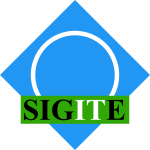 SIGITE-2012-Thompson #community #development #education
SIGITE-2012-Thompson #community #development #education- Why tenure is not a private sector term: a look at the role of educational institutions in a changing world of commercialization, investing, and community development (RT), pp. 1–2.
 CSMR-2012-TollO #game studies #question
CSMR-2012-TollO #game studies #question- Why is Unit-testing in Computer Games Difficult? (DT, TO), pp. 373–378.
 ICSM-2012-ZhangPXZ #developer #what
ICSM-2012-ZhangPXZ #developer #what- Cloning practices: Why developers clone and what can be changed (GZ, XP, ZX, WZ), pp. 285–294.
 ICSM-2012-ZouG #algorithm #automation #case study #detection #industrial #what
ICSM-2012-ZouG #algorithm #automation #case study #detection #industrial #what- An industrial case study of Coman’s automated task detection algorithm: What Worked, What Didn’t, and Why (LZ, MWG), pp. 6–14.
 MSR-2012-ArthoSCTZ #question
MSR-2012-ArthoSCTZ #question- Why do software packages conflict? (CA, KS, RDC, RT, SZ), pp. 141–150.
 CHI-2012-LeonUSWBC #behaviour #evaluation #online #tool support #usability
CHI-2012-LeonUSWBC #behaviour #evaluation #online #tool support #usability- Why Johnny can’t opt out: a usability evaluation of tools to limit online behavioral advertising (PGL, BU, RS, YW, RB, LFC), pp. 589–598.
 CSCW-2012-DongF #communication
CSCW-2012-DongF #communication- One piece at a time: why video-based communication is better for negotiation and conflict resolution (WD, WTF), pp. 167–176.
 CIKM-2012-BlancoCLPS #exclamation #recommendation
CIKM-2012-BlancoCLPS #exclamation #recommendation- You should read this! let me explain you why: explaining news recommendations to users (RB, DC, CL, RP, FS), pp. 1995–1999.
 HILT-2012-Leino12a #proving #using #verification
HILT-2012-Leino12a #proving #using #verification- Program proving using intermediate verification languages (IVLs) like boogie and why3 (KRML), pp. 25–26.
 REFSQ-2012-Lauesen
REFSQ-2012-Lauesen - Why the Electronic Land Registry Failed (SL), pp. 1–15.
 REFSQ-2012-MahauxMH #how #people #requirements
REFSQ-2012-MahauxMH #how #people #requirements- Choose Your Creativity: Why and How Creativity in Requirements Engineering Means Different Things to Different People (MM, AM, PH), pp. 101–116.
 ICSE-2012-Johnson #case study #question #static analysis #tool support #using
ICSE-2012-Johnson #case study #question #static analysis #tool support #using- A study on improving static analysis tools: Why are we not using them? (BJ), pp. 1607–1609.
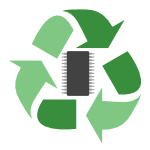 ISMM-2012-OCallahan #memory management #question #using #web
ISMM-2012-OCallahan #memory management #question #using #web- Why is your web browser using so much memory? (RO), pp. 1–2.
 ICLP-2012-BaralVL #how #knowledge base
ICLP-2012-BaralVL #how #knowledge base- Answering Why and How questions with respect to a frame-based knowledge base: a preliminary report (CB, NHV, SL), pp. 26–36.
 WICSA-2011-Smet #architecture #health #question
WICSA-2011-Smet #architecture #health #question- The Dutch Nationwide Electronic Health Record: Why the Centralised Services Architecture? (KdS), pp. 181–186.
 CHI-2011-ChettyHBOSG #internet #network
CHI-2011-ChettyHBOSG #internet #network- Why is my internet slow?: making network speeds visible (MC, DH, AB, UO, BS, REG), pp. 1889–1898.
 CHI-2011-DabbishMG #self
CHI-2011-DabbishMG #self- Why do i keep interrupting myself?: environment, habit and self-interruption (LD, GM, VMG), pp. 3127–3130.
 CHI-2011-LindqvistCWHZ #people
CHI-2011-LindqvistCWHZ #people- I’m the mayor of my house: examining why people use foursquare — a social-driven location sharing application (JL, JC, JW, JIH, JZ), pp. 2409–2418.
 CSCW-2011-BalakrishnanKCZ #integration #matter #research #what
CSCW-2011-BalakrishnanKCZ #integration #matter #research #what- Research team integration: what it is and why it matters (ADB, SBK, JNC, RZ), pp. 523–532.
 DUXU-v1-2011-Innes #design #enterprise
DUXU-v1-2011-Innes #design #enterprise- Why Enterprises Can’t Innovate: Helping Companies Learn Design Thinking (JI), pp. 442–448.
 DUXU-v1-2011-Pratschke #human-computer #image #matter #visual notation
DUXU-v1-2011-Pratschke #human-computer #image #matter #visual notation- Why History Matters: Visual Innovation and the Role of Image Theory in HCI (MP), pp. 277–284.
 DUXU-v1-2011-SirotkinM #difference #experience #in the cloud #user interface
DUXU-v1-2011-SirotkinM #difference #experience #in the cloud #user interface- The New Experience for Business: Why User Experience Is the Differentiation Strategy in the Cloud Context (AS, BM), pp. 491–499.
 HCI-UA-2011-AbrahamJ #comprehension #perspective
HCI-UA-2011-AbrahamJ #comprehension #perspective- An Enriched Understanding of Why the Environment and Individual Characteristics Are Important in Understanding Technology Utilization in Healthcare: An Evolutionary Psychology Perspective (CA, IAJ), pp. 141–150.
 HCI-UA-2011-Loiacono-MelloDTP #case study #generative
HCI-UA-2011-Loiacono-MelloDTP #case study #generative- Why Virtual Job Recruitment Is Not Well Accepted by Generation Y? — A Case Study on Second Life (ETLM, SD, BT, OVP), pp. 245–254.
 CIKM-2011-LangeN #metric #similarity
CIKM-2011-LangeN #metric #similarity- Frequency-aware similarity measures: why Arnold Schwarzenegger is always a duplicate (DL, FN), pp. 243–248.
 CIKM-2011-YangZKL #how #learning #question
CIKM-2011-YangZKL #how #learning #question- Can irrelevant data help semi-supervised learning, why and how? (HY, SZ, IK, MRL), pp. 937–946.
 SIGIR-2011-GuoWZAD #comprehension #predict
SIGIR-2011-GuoWZAD #comprehension #predict- Why searchers switch: understanding and predicting engine switching rationales (QG, RWW, YZ, BA, STD), pp. 335–344.
 OOPSLA-2011-YangBFSM #matter
OOPSLA-2011-YangBFSM #matter- Why nothing matters: the impact of zeroing (XY, SMB, DF, JBS, KSM), pp. 307–324.
 SIGAda-2011-Carlisle #ada
SIGAda-2011-Carlisle #ada- Why i came back to Ada (MCC), pp. 37–38.
 ICSE-2011-StreitP #how #quality
ICSE-2011-StreitP #how #quality- Why software quality improvement fails: (and how to succeed nevertheless) (JS, MP), pp. 726–735.
 CGO-2011-Leroy #compilation #how #question #verification
CGO-2011-Leroy #compilation #how #question #verification- Formally verifying a compiler: Why? How? How far? (XL).
 DAC-2011-Heiser #embedded #question
DAC-2011-Heiser #embedded #question- Virtualizing embedded systems: why bother? (GH), pp. 901–905.
 DAC-2011-Hu #how
DAC-2011-Hu #how- New sub-20nm transistors: why and how (CH), pp. 460–463.
 ICST-2011-Sun #debugging #question
ICST-2011-Sun #debugging #question- Why are Bug Reports Invalid? (JS), pp. 407–410.
 JCDL-2010-MakriBC #behaviour #what
JCDL-2010-MakriBC #behaviour #what- This is what I’m doing and why: reflections on a think-aloud study of dl users’ information behaviour (SM, AB, ALC), pp. 349–352.
 CSEET-2010-Thompson #effectiveness #industrial #re-engineering
CSEET-2010-Thompson #effectiveness #industrial #re-engineering- Why Better Industrial/Academic Links Are Needed If There is to Be an Effective Software Engineering Workforce (JBT), pp. 105–112.
 SCAM-2010-Harman #analysis #source code
SCAM-2010-Harman #analysis #source code- Why Source Code Analysis and Manipulation Will Always be Important (MH), pp. 7–19.
 CHI-2010-AhlstromCGI #design #modelling
CHI-2010-AhlstromCGI #design #modelling- Why it’s quick to be square: modelling new and existing hierarchical menu designs (DA, AC, CG, PI), pp. 1371–1380.
 CHI-2010-DearmanT #exclamation
CHI-2010-DearmanT #exclamation- Why users of yahoo!: answers do not answer questions (DD, KNT), pp. 329–332.
 CHI-2010-HsiehKH #how
CHI-2010-HsiehKH #how- Why pay?: exploring how financial incentives are used for question & answer (GH, REK, SEH), pp. 305–314.
 CHI-2010-MorrisTP #behaviour #network #overview #people #social #what
CHI-2010-MorrisTP #behaviour #network #overview #people #social #what- What do people ask their social networks, and why?: a survey study of status message q&a behavior (MRM, JT, KP), pp. 1739–1748.
 CSCW-2010-BardramH #case study #coordination
CSCW-2010-BardramH #case study #coordination- Why the plan doesn’t hold: a study of situated planning, articulation and coordination work in a surgical ward (JEB, TRH), pp. 331–340.
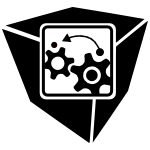 SOFTVIS-2010-Booch #developer #diagrams #question
SOFTVIS-2010-Booch #developer #diagrams #question- Why don’t developers draw diagrams? (GB), pp. 3–4.
 ICEIS-HCI-2010-PereiraBS #question #social
ICEIS-HCI-2010-PereiraBS #question #social- A Framework-informed Discussion on Social Software — Why Some Social Software Fail and Others do Not? (RP, MCCB, SRPdS), pp. 149–154.
 ECIR-2010-AnderkaSP #bound #similarity
ECIR-2010-AnderkaSP #bound #similarity- Cross-Language High Similarity Search: Why No Sub-linear Time Bound Can Be Expected (MA, BS, MP), pp. 640–644.
 KDD-2010-AttenbergP #classification #learning #modelling
KDD-2010-AttenbergP #classification #learning #modelling- Why label when you can search?: alternatives to active learning for applying human resources to build classification models under extreme class imbalance (JA, FJP), pp. 423–432.
 SAS-2010-Lesens #question #static analysis #using
SAS-2010-Lesens #question #static analysis #using- Using Static Analysis in Space: Why Doing so? (DL), pp. 51–70.
 RE-2010-LiuLP #overview #requirements
RE-2010-LiuLP #overview #requirements- Why Requirements Engineering Fails: A Survey Report from China (LL, TL, FP), pp. 317–322.
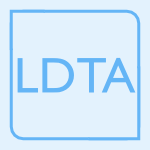 LDTA-2009-BaggeH10 #concept #matter
LDTA-2009-BaggeH10 #concept #matter- Interfacing Concepts: Why Declaration Style Shouldn’t Matter (AHB, MH), pp. 37–50.
 DATE-2010-Horowitz #design
DATE-2010-Horowitz #design- Why design must change: Rethinking digital design (MH), p. 791.
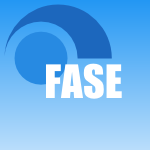 FASE-2010-Harman #optimisation
FASE-2010-Harman #optimisation- Why the Virtual Nature of Software Makes It Ideal for Search Based Optimization (MH), pp. 1–12.
 SIGMOD-2009-ChapmanJ #question
SIGMOD-2009-ChapmanJ #question- Why not? (AC, HVJ), pp. 523–534.
 SIGMOD-2009-DasguptaZDC #database #how #privacy #question
SIGMOD-2009-DasguptaZDC #database #how #privacy #question- Privacy preservation of aggregates in hidden databases: why and how? (AD, NZ, GD, SC), pp. 153–164.
 EDM-2009-MostowB #how #lessons learnt #what
EDM-2009-MostowB #how #lessons learnt #what- Why, What, and How to Log? Lessons from LISTEN (JM, JB), pp. 269–278.
 ITiCSE-2009-DeePBP #case study #experience #women
ITiCSE-2009-DeePBP #case study #experience #women- Why are we still here?: experiences of successful women in computing (HMD, KEP, RDB, RP), pp. 233–237.
 CHI-2009-HerringCKB #comprehension #design #exclamation #how
CHI-2009-HerringCKB #comprehension #design #exclamation #how- Getting inspired!: understanding how and why examples are used in creative design practice (SRH, CCC, JK, BPB), pp. 87–96.
 CHI-2009-LimDA
CHI-2009-LimDA - Why and why not explanations improve the intelligibility of context-aware intelligent systems (BYL, AKD, DA), pp. 2119–2128.
 CHI-2009-NylanderLB #internet #people
CHI-2009-NylanderLB #internet #people- At home and with computer access: why and where people use cell phones to access the internet (SN, TL, AB), pp. 1639–1642.
 CHI-2009-OdomPSB #comprehension #design #interactive
CHI-2009-OdomPSB #comprehension #design #interactive- Understanding why we preserve some things and discard others in the context of interaction design (WO, JP, ES, EB), pp. 1053–1062.
 CHI-2009-YataniCJT #comprehension #development #diagrams #how #open source
CHI-2009-YataniCJT #comprehension #development #diagrams #how #open source- Understanding how and why open source contributors use diagrams in the development of Ubuntu (KY, EC, CJ, KNT), pp. 995–1004.
 CHI-2009-ZhouAZ #maintenance
CHI-2009-ZhouAZ #maintenance- I just don’t know why it’s gone: maintaining informal information use in inpatient care (XZ, MSA, KZ), pp. 2061–2070.
 HCD-2009-KohNTTWH #analysis
HCD-2009-KohNTTWH #analysis- Why Taking Medicine Is a Chore — An Analysis of Routine and Contextual Factors in the Home (WKK, JN, OYT, ZT, AHYW, MGH), pp. 452–461.
 OCSC-2009-BrandtzaegH #network #people #social
OCSC-2009-BrandtzaegH #network #people #social- Why People Use Social Networking Sites (PBB, JH), pp. 143–152.
 ECOOP-2009-Jones #haskell #what
ECOOP-2009-Jones #haskell #what- Classes, Jim, But Not as We Know Them — Type Classes in Haskell: What, Why, and Whither (SLPJ), p. 1.
 CSEET-2008-DeKoenigsberg #how #open source #student
CSEET-2008-DeKoenigsberg #how #open source #student- How Successful Open Source Projects Work, and How and Why to Introduce Students to the Open Source World (GD), pp. 274–276.
 ITiCSE-2008-Hall #web #what
ITiCSE-2008-Hall #web #what- What is web science and why is it important to CSE (WH), pp. 1–2.
 CSCW-2008-PriedhorskyT #how #what
CSCW-2008-PriedhorskyT #how #what- The computational geowiki: what, why, and how (RP, LGT), pp. 267–276.
 ICEIS-DISI-2008-PennesiHRWS #what
ICEIS-DISI-2008-PennesiHRWS #what- WWW++ — Adding Why to What, When and Where (PP, MH, CR, CYW, SS), pp. 304–309.
 ICEIS-ISAS2-2008-Nobre #design #social
ICEIS-ISAS2-2008-Nobre #design #social- Why Heidegger? — Critical Insights for IS Design from Pragmatism and from Social Semiotics (ÂLN), pp. 435–441.
 ICSE-2008-KoM #behaviour #debugging
ICSE-2008-KoM #behaviour #debugging- Debugging reinvented: asking and answering why and why not questions about program behavior (AJK, BAM), pp. 301–310.
 ICSE-2008-NiggemannS #modelling
ICSE-2008-NiggemannS #modelling- Models for model’s sake: why explicit system models are also an end to themselves (ON, JS), pp. 561–570.
 DAC-2008-Haensch #3d #integration #question
DAC-2008-Haensch #3d #integration #question- Why should we do 3D integration? (WH), pp. 674–675.
 HT-2007-schraefel #question #semantics #web #what
HT-2007-schraefel #question #semantics #web #what- What is an analogue for the semantic web and why is having one important? (MMCS), pp. 123–132.
 SIGMOD-2007-GrustRT #off the shelf #xpath
SIGMOD-2007-GrustRT #off the shelf #xpath- Why off-the-shelf RDBMSs are better at XPath than you might expect (TG, JR, JT), pp. 949–958.
 VLDB-2007-IvesDR #adaptation #how #query #question #what
VLDB-2007-IvesDR #adaptation #how #query #question #what- Adaptive query processing: Why, How, When, and What Next? (ZGI, AD, VR), pp. 1426–1427.
 VLDB-2007-PossNW #analysis
VLDB-2007-PossNW #analysis- Why You Should Run TPC-DS: A Workload Analysis (MP, RON, DW), pp. 1138–1149.
 CSEET-2007-WilliamsL #question
CSEET-2007-WilliamsL #question- Lab Partners: If They’re Good Enough for the Natural Sciences, Why Aren’t They Good Enough for Us? (LW, LL), pp. 72–82.
 Haskell-2007-Mainland #haskell
Haskell-2007-Mainland #haskell- Why it's nice to be quoted: quasiquoting for haskell (GM), pp. 73–82.
 CHI-2007-AmesN #mobile #online
CHI-2007-AmesN #mobile #online- Why we tag: motivations for annotation in mobile and online media (MA, MN), pp. 971–980.
 CHI-2007-CherubiniVDK #developer #how
CHI-2007-CherubiniVDK #developer #how- Let’s go to the whiteboard: how and why software developers use drawings (MC, GV, RD, AJK), pp. 557–566.
 CHI-2007-KalnikaiteW #memory management #people
CHI-2007-KalnikaiteW #memory management #people- Software or wetware?: discovering when and why people use digital prosthetic memory (VK, SW), pp. 71–80.
 HCI-IDU-2007-FujimuraSMKSIMOWFT #case study
HCI-IDU-2007-FujimuraSMKSIMOWFT #case study- Why Does IT Support Enjoyment of Elderly Life? — Case Studies Performed in Japan (KF, HS, TM, KK, KiS, YI, SM, KO, TW, YF, TT), pp. 756–764.
 HCI-IDU-2007-Karjalainen #analysis
HCI-IDU-2007-Karjalainen #analysis- Why It Is Difficult to Use a Simple Device: An Analysis of a Room Thermostat (SK), pp. 544–548.
 SPLC-2007-TischerMKG #product line
SPLC-2007-TischerMKG #product line- Why does it take that long? Establishing Product Lines in the Automotive Domain (CT, AM, MK, LG), pp. 269–274.
 SAC-2007-Savoy #topic
SAC-2007-Savoy #topic- Why do successful search systems fail for some topics (JS), pp. 872–877.
 CAV-2007-FilliatreM #deduction #framework #platform #verification
CAV-2007-FilliatreM #deduction #framework #platform #verification- The Why/Krakatoa/Caduceus Platform for Deductive Program Verification (JCF, CM), pp. 173–177.
 SIGMOD-2006-DeshpandeHR #adaptation #how #query #what
SIGMOD-2006-DeshpandeHR #adaptation #how #query #what- Adaptive query processing: why, how, when, what next (AD, JMH, VR), pp. 806–807.
 CSEET-2006-Budgen #nondeterminism
CSEET-2006-Budgen #nondeterminism- Why should they believe us? Determinism, non-determinism and evidence (DB), p. 4.
 CHI-2006-DhamijaTH
CHI-2006-DhamijaTH - Why phishing works (RD, JDT, MAH), pp. 581–590.
 CHI-2006-MyersWKC #user interface
CHI-2006-MyersWKC #user interface- Answering why and why not questions in user interfaces (BAM, DAW, AJK, DHC), pp. 397–406.
 CAiSE-2006-HaggmarkA #analysis #logic #principle
CAiSE-2006-HaggmarkA #analysis #logic #principle- Why Software Engineers Do Not Keep to the Principle of Separating Business Logic from Display: A Method Rationale Analysis (MH, PJÅ), pp. 399–413.
 EDOC-2006-MutschlerBR #empirical #industrial #information management
EDOC-2006-MutschlerBR #empirical #industrial #information management- Why Process-Orientation is Scarce: An Empirical Study of Process-oriented Information Systems in the Automotive Industry (BM, JB, MR), pp. 433–440.
 SIGIR-2006-TrotmanL06a #query
SIGIR-2006-TrotmanL06a #query- Why structural hints in queries do not help XML-retrieval (AT, ML), pp. 711–712.
 POPL-2006-McKinna #dependent type #matter
POPL-2006-McKinna #dependent type #matter- Why dependent types matter (JM), p. 1.
 SIGAda-2006-Taft #ada #exclamation #using
SIGAda-2006-Taft #ada #exclamation #using- Why you should be using Ada 2005 now! (STT), p. 75.
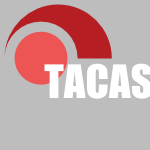 TACAS-2006-GurfinkelC #abstraction #question
TACAS-2006-GurfinkelC #abstraction #question- Why Waste a Perfectly Good Abstraction? (AG, MC), pp. 212–226.
 ICLP-2006-Lam #datalog #question #source code
ICLP-2006-Lam #datalog #question #source code- Why Use Datalog to Analyze Programs? (MSL), p. 1.
 VLDB-2005-Olstad #database #query
VLDB-2005-Olstad #database #query- Why Search Engines are Used Increasingly to Offload Queries from Databases (BO), p. 1.
 ITiCSE-2005-BiancoT #process #question
ITiCSE-2005-BiancoT #process #question- Why are children left out of the CS rethinking process? (GMB, ST), p. 352.
 ITiCSE-2005-Penha-Lopes #open source #question
ITiCSE-2005-Penha-Lopes #open source #question- Why use an open source e-voting system? (JMPL), p. 412.
 DiGRA-2005-Bittanti #game studies #quote
DiGRA-2005-Bittanti #game studies #quote- “Making Sense of Manhunt” or “Why We Play: The Seductions of Violent Entertainment” (MB).
 DiGRA-2005-FicocelliG #development #game studies #question
DiGRA-2005-FicocelliG #development #game studies #question- B.Sc. Computer Game Development ... Why not? (LF, DG).
 DiGRA-2005-Haines #game studies #question #women
DiGRA-2005-Haines #game studies #question #women- Why are there so few women working in games? (LH).
 DiGRA-2005-McGonigal #collaboration #design #distributed #exclamation #game studies
DiGRA-2005-McGonigal #collaboration #design #distributed #exclamation #game studies- SuperGaming! Distributed Design for Massively Collaborative Play, or, Why I Love Bees (JM).
 CHI-2005-ConsolvoSMLTP #people #social #what
CHI-2005-ConsolvoSMLTP #people #social #what- Location disclosure to social relations: why, when, & what people want to share (SC, IES, TM, AL, JT, PP), pp. 81–90.
 CHI-2005-OviattLC #difference #integration #multimodal #question #what
CHI-2005-OviattLC #difference #integration #multimodal #question #what- Individual differences in multimodal integration patterns: what are they and why do they exist? (SLO, RL, RC), pp. 241–249.
 ICEIS-v5-2005-Murano #effectiveness #feedback #user interface
ICEIS-v5-2005-Murano #effectiveness #feedback #user interface- Why Anthropomorphic User Interface Feedback can be Effective and Preferred by Users (PM), pp. 12–19.
 ICML-2005-RosellHRP #learning
ICML-2005-RosellHRP #learning- Why skewing works: learning difficult Boolean functions with greedy tree learners (BR, LH, SR, DP), pp. 728–735.
 SIGIR-2005-BastM #retrieval
SIGIR-2005-BastM #retrieval- Why spectral retrieval works (HB, DM), pp. 11–18.
 RE-2005-BerryDFGHW #question #requirements
RE-2005-BerryDFGHW #question #requirements- To do or not to do: If the requirements engineering payoff is so good, why aren’t more companies doing it? (DMB, DD, AF, DCG, RH, AW), p. 447.
 RE-2005-SvetinovicBG #analysis #concept #identification #object-oriented #student
RE-2005-SvetinovicBG #analysis #concept #identification #object-oriented #student- Concept Identification in Object-Oriented Domain Analysis: Why Some Students Just Don’t Get It (DS, DMB, MWG), pp. 189–198.
 ICSE-2005-Siegel #architecture #design #distributed #modelling #question
ICSE-2005-Siegel #architecture #design #distributed #modelling #question- Why use the model driven architecture to design and build distributed applications? (JS), p. 37.
 DATE-2005-MellorWM #uml
DATE-2005-MellorWM #uml- Why Systems-on-Chip Needs More UML like a Hole in the Head (SJM, JRW, CM), pp. 834–835.
 PPoPP-2005-Hanrahan #hardware #performance #question
PPoPP-2005-Hanrahan #hardware #performance #question- Why is graphics hardware so fast? (PH), p. 1.
 ITiCSE-WGR-2004-LeBlancD #education
ITiCSE-WGR-2004-LeBlancD #education- Bioinformatics and computing curricula 2001: why computer science is well positioned in a post-genomic world (MDL, BDD), pp. 64–68.
 ICFP-2004-NeergaardM #type system
ICFP-2004-NeergaardM #type system- Types, potency, and idempotency: why nonlinearity and amnesia make a type system work (PMN, HGM), pp. 138–149.
 KDD-2004-JensenNG #classification #relational
KDD-2004-JensenNG #classification #relational- Why collective inference improves relational classification (DJ, JN, BG), pp. 593–598.
 KR-2004-Patel-Schneider #owl #question #what
KR-2004-Patel-Schneider #owl #question #what- What Is OWL (and Why Should I Care)? (PFPS), pp. 735–737.
 SIGIR-2004-Buckley04a #information retrieval
SIGIR-2004-Buckley04a #information retrieval- Why current IR engines fail (CB), pp. 584–585.
 DATE-v1-2004-KretzschmarNM #power management
DATE-v1-2004-KretzschmarNM #power management- Why Transition Coding for Power Minimization of On-Chip Buses Does Not Work (CK, AKN, DM), pp. 512–517.
 STOC-2004-Wigderson #question
STOC-2004-Wigderson #question- Depth through breadth, or why should we attend talks in other areas? (AW), p. 579.
 CAV-2004-Metzner #analysis #model checking
CAV-2004-Metzner #analysis #model checking- Why Model Checking Can Improve WCET Analysis (AM), pp. 334–347.
 VMCAI-2004-Wilhelm
VMCAI-2004-Wilhelm - Why AI + ILP Is Good for WCET, but MC Is Not, Nor ILP Alone (RW), pp. 309–322.
 ITiCSE-2003-BarkerG03a #experience #student
ITiCSE-2003-BarkerG03a #experience #student- Why project courses sometimes widen the experience gap among students (LJB, KGD), p. 258.
 DiGRA-2003-Myers
DiGRA-2003-Myers - The attack of the backstories (and why they won't win) (DM).
 RE-2003-DeraitusM #requirements
RE-2003-DeraitusM #requirements- Customer Requirements and User Requirements: Why the Discrepancies (MD, AM), p. 279.
 ICSE-2003-Fairbanks #architecture #case study #developer #experience #modelling
ICSE-2003-Fairbanks #architecture #case study #developer #experience #modelling- Why Can’t They Create Architecture Models Like “Developer X”? An Experience Report (GF), pp. 548–552.
 JCDL-2002-SeadleDG
JCDL-2002-SeadleDG - Why watermark?: the copyright need for an engineering solution (MSS, JRD, AG), pp. 324–325.
 ITiCSE-2002-HabermanA #recursion #student
ITiCSE-2002-HabermanA #recursion #student- The case of base cases: why are they so difficult to recognize? student difficulties with recursion (BH, HA), pp. 84–88.
 ICALP-2002-HitchcockL #complexity #strict
ICALP-2002-HitchcockL #complexity #strict- Why Computational Complexity Requires Stricter Martingales (JMH, JHL), pp. 549–560.
 ICGT-2002-Harel #behaviour #requirements
ICGT-2002-Harel #behaviour #requirements- Can Behavioral Requirements Be Executed? (And Why Would We Want to Do So?) (DH), pp. 6–7.
 CSCW-2002-BradnerM #distance #matter #persuasion
CSCW-2002-BradnerM #distance #matter #persuasion- Why distance matters: effects on cooperation, persuasion and deception (EB, GM), pp. 226–235.
 ICPR-v2-2002-AltyncayD #classification #multi #normalisation #problem #question
ICPR-v2-2002-AltyncayD #classification #multi #normalisation #problem #question- Why Does Output Normalization Create Problems in Multiple Classifier Systems? (HA, MD), pp. 775–778.
 SEKE-2002-JorgensenM #development #how #predict #question
SEKE-2002-JorgensenM #development #how #predict #question- Combination of software development effort prediction intervals: why, when and how? (MJ, KM), pp. 425–428.
 LDTA-2002-Consel #domain-specific language #how #what
LDTA-2002-Consel #domain-specific language #how #what- Domain-Specific Languages: What, Why, How (CC), p. 1.
 DAC-2002-SeryBD #question
DAC-2002-SeryBD #question- Life is CMOS: why chase the life after? (GS, SB, VD), pp. 78–83.
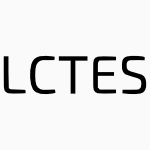 LCTES-SCOPES-2002-Fettweis #exclamation #named
LCTES-SCOPES-2002-Fettweis #exclamation #named- DSPs: why don’t they just go away! (GF), p. 93.
 WICSA-2001-BaragryR #architecture
WICSA-2001-BaragryR #architecture- Why We Need A Different View of Software Architecture (JB, KR), p. 125–?.
 ICDAR-2001-HuKLWN
ICDAR-2001-HuKLWN - Why Table Ground-Truthing is Hard (JH, RSK, DPL, GTW, GN), pp. 129–133.
 JCDL-2001-CunninghamKR #library
JCDL-2001-CunninghamKR #library- An ethnographic study of technical support workers: why we didn’t build a tech support digital library (SJC, CK, NR), pp. 189–198.
 ITiCSE-2001-Kaczmarczyk #assessment #distance #education #student
ITiCSE-2001-Kaczmarczyk #assessment #distance #education #student- Accreditation and student assessment in distance education: why we all need to pay attention (LCK), pp. 113–116.
 ICALP-2001-Nielsen #modelling #partial order #question
ICALP-2001-Nielsen #modelling #partial order #question- Modelling with Partial Orders — Why and Why Not? (MN), pp. 61–63.
 CAiSE-2001-PerssonS #case study #enterprise #modelling
CAiSE-2001-PerssonS #case study #enterprise #modelling- Why Enterprise Modelling? An Explorative Study into Current Practice (AP, JS), pp. 465–468.
 SIGIR-2001-TurpinH
SIGIR-2001-TurpinH - Why Batch and User Evaluations Do Not Give the Same Results (AT, WRH), pp. 225–231.
 SAS-2001-Schneider #security #what
SAS-2001-Schneider #security #what- Language-Based Security: What’s Needed and Why (FBS), p. 374.
 STOC-2001-SpielmanT #algorithm #analysis #polynomial
STOC-2001-SpielmanT #algorithm #analysis #polynomial- Smoothed analysis of algorithms: why the simplex algorithm usually takes polynomial time (DAS, SHT), pp. 296–305.
 IFM-2000-Schulte #formal method #question
IFM-2000-Schulte #formal method #question- Why Doesn’t Anyone Use Formal Methods? (WS), pp. 297–298.
 CHI-2000-EspinosaCRKSL #tool support
CHI-2000-EspinosaCRKSL #tool support- Coming to the wrong decision quickly: why awareness tools must be matched with appropriate tasks (JAE, JJC, LRG, REK, WLS, GL), pp. 392–399.
 CAiSE-2000-KaindlM #question #research
CAiSE-2000-KaindlM #question #research- Why Is It So Difficult to Introduce RE Research Results into Mainstream RE Practice? (HK, JM), pp. 7–12.
 ICEIS-2000-Vaast #how #question
ICEIS-2000-Vaast #how #question- Exploring Intranets: Why and How to Study Intranets in French Firms? (EV), pp. 499–505.
 ICML-2000-HsuHW #classification #naive bayes
ICML-2000-HsuHW #classification #naive bayes- Why Discretization Works for Naive Bayesian Classifiers (CNH, HJH, TTW), pp. 399–406.
 UML-2000-AtkinsonK #how #strict
UML-2000-AtkinsonK #how #strict- Strict Profiles: Why and How (CA, TK), pp. 309–322.
 TOOLS-EUROPE-2000-Reenskaug #collaboration #how #uml #what
TOOLS-EUROPE-2000-Reenskaug #collaboration #how #uml #what- The What, Why and How of the UML Collaboration (TR), p. 476.
 ICRE-2000-Greenspan #question #requirements
ICRE-2000-Greenspan #question #requirements- Why is it so Easy to Introduce Requirements Engineering Technology Transfer Panels into Mainstream Practice? (SJG), pp. 69–70.
 ICRE-2000-Kaindl #question #requirements #research
ICRE-2000-Kaindl #question #requirements #research- Why is it so Difficult to Introduce Requirements Engineering Research Results into Mainstream Requirements Engineering Practice? (HK), pp. 67–68.
 ICRE-2000-Mead #question #requirements #research
ICRE-2000-Mead #question #requirements #research- Why is it so Difficult to Introduce Requirements Engineering Research Results into Mainstream Requirements Engineering Practice? (NRM), pp. 75–76.
 ICRE-2000-Parnas #documentation #requirements
ICRE-2000-Parnas #documentation #requirements- Requirements Documentation: Why a Formal Basis is Essential (DLP), pp. 81–84.
 ICSE-2000-OsterweilBEGKM #re-engineering #research
ICSE-2000-OsterweilBEGKM #re-engineering #research- Why don’t we get more (self?) respect: the positive impact of software engineering research upon practice (LJO, BWB, ME, VG, JK, EFM), p. 660.
 ITiCSE-1999-McCrackenW
ITiCSE-1999-McCrackenW - Why? When an otherwise successful intervention fails (MM, RW), pp. 9–12.
 ITiCSE-1999-Siegel #infinity
ITiCSE-1999-Siegel #infinity- Why do fools fall into infinite loops: singing to your computer science class (EVS), pp. 167–170.
 HCI-CCAD-1999-Wulf #modelling #quote
HCI-CCAD-1999-Wulf #modelling #quote- “Why did that happen?” — Building appropriate mental models on groupware functions (VW), pp. 338–342.
 HCI-EI-1999-BergB #enterprise #multi #question #user interface
HCI-EI-1999-BergB #enterprise #multi #question #user interface- Why extending ERP software with multi-user interfaces? (RJvdB, IMBS), pp. 1083–1087.
 UML-1999-DemeyerDT #uml
UML-1999-DemeyerDT #uml- Why Unified is not Universal? UML Shortcomings for Coping with Round-trip Engineering (SD, SD, ST), pp. 630–644.
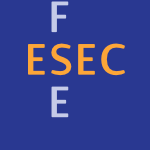 ESEC-FSE-1999-Zeller #question
ESEC-FSE-1999-Zeller #question- Yesterday, My Program Worked. Today, It Does Not. Why? (AZ), pp. 253–267.
 DAC-1999-DeHonW #automation #configuration management #design #what
DAC-1999-DeHonW #automation #configuration management #design #what- Reconfigurable Computing: What, Why, and Implications for Design Automation (AD, JW), pp. 610–615.
 DAC-1999-PrasadCK #question
DAC-1999-PrasadCK #question- Why is ATPG Easy? (MRP, PC, KK), pp. 22–28.
 LCTES-1999-Engblom #benchmark #embedded #metric #tool support
LCTES-1999-Engblom #benchmark #embedded #metric #tool support- Why SpecInt95 Should Not Be Used to Benchmark Embedded Systems Tools (JE), pp. 96–103.
 ITiCSE-1998-CurzonR #programming #question #student
ITiCSE-1998-CurzonR #programming #question #student- Why do students take programming modules? (PC, JR), pp. 59–63.
 ITiCSE-1998-Kotze #hypermedia
ITiCSE-1998-Kotze #hypermedia- Why the hypermedia model is inadequate for computer-based instruction (PK), pp. 148–152.
 REFSQ-1998-YuM #requirements
REFSQ-1998-YuM #requirements- Why Goal-Oriented Requirements Engineering (ESKY, JM), pp. 15–22.
 ITiCSE-1997-Moser #game studies #learning #what
ITiCSE-1997-Moser #game studies #learning #what- A fantasy adventure game as a learning environment: why learning to program is so difficult and what can be done about it (RM), pp. 114–116.
 HCI-CC-1997-ShafferC #identification #question #reduction
HCI-CC-1997-ShafferC #identification #question #reduction- Identifying Areas for Workload Reduction Through System Changes: Why Bother? (MTS, HKC), pp. 497–500.
 CAiSE-1997-CathalaP #behaviour #how
CAiSE-1997-CathalaP #behaviour #how- Preserving Behaviour: Why and How (FC, PP), pp. 333–346.
 ICML-1997-SchefferGD
ICML-1997-SchefferGD - Why Experimentation can be better than “Perfect Guidance” (TS, RG, CD), pp. 331–339.
 KDD-1997-Domingos
KDD-1997-Domingos - Why Does Bagging Work? A Bayesian Account and its Implications (PMD), pp. 155–158.
 SAC-1997-ChungP #algorithm #problem #question #representation #search-based
SAC-1997-ChungP #algorithm #problem #question #representation #search-based- Why is problem-dependent and high-level representation scheme better in a genetic algorithm? (SC, RP), pp. 239–246.
 ITiCSE-1996-Naps #algorithm #how #visualisation #web
ITiCSE-1996-Naps #algorithm #how #visualisation #web- Algorithm visualization served off the World Wide Web: why and how (TLN), pp. 66–71.
 ICPR-1996-Fainzilberg #recognition #statistics
ICPR-1996-Fainzilberg #recognition #statistics- Why relevant features may be unuseful in statistical recognition of two classes (LF), pp. 730–734.
 ICPR-1996-PlamondonG #question #segmentation
ICPR-1996-PlamondonG #question #segmentation- Why handwriting segmentation can be misleading? (RP, WG), pp. 396–400.
 ICRE-1996-DeMarco #question #requirements
ICRE-1996-DeMarco #question #requirements- Requirements Engineering: Why Aren’t We Better at It? (TD), pp. 2–3.
 ICSE-1996-Schneider #how #prototype
ICSE-1996-Schneider #how #prototype- Prototypes as Assets, not Toys: Why and How to Extract Knowledge from Prototypes (KS), pp. 522–531.
 OOPSLA-1995-Riehle #encapsulation #how
OOPSLA-1995-Riehle #encapsulation #how- How and Why to Encapsulate Class Trees (DR), pp. 251–264.
 ESEC-1995-Bancilhon #database
ESEC-1995-Bancilhon #database- Why We Need Object Databases (FB), pp. 3–4.
 ICSE-1995-GarlanAO #architecture
ICSE-1995-GarlanAO #architecture- Architectural Mismatch or Why It’s Hard to Build Systems Out Of Existing Parts (DG, RA, JO), pp. 179–185.
 VLDB-1994-Galindo-LegariaPK #performance #question #random
VLDB-1994-Galindo-LegariaPK #performance #question #random- Fast, Randomized Join-Order Selection — Why Use Transformations? (CAGL, AP, MLK), pp. 85–95.
 CHI-1994-RiemanLYP94a #architecture #consistency #interface #reasoning
CHI-1994-RiemanLYP94a #architecture #consistency #interface #reasoning- Why is a raven like a writing desk?: lessons in interface consistency and analogical reasoning from two cognitive architectures (JR, CHL, RMY, PGP), pp. 438–444.
 KR-1994-LinR #database #how #logic
KR-1994-LinR #database #how #logic- How to Progress a Database (and Why) I. Logical Foundations (FL, RR), pp. 425–436.
 PLDI-1994-Pugh #how
PLDI-1994-Pugh #how- Counting Solutions to Presburger Formulas: How and Why (WP), pp. 121–134.
 PLILP-1994-Smith #multi
PLILP-1994-Smith #multi- Why Multi-SLD Beats SLD (Even on a Uniprocessor) (DAS), pp. 40–56.
 ICSE-1994-YuM #analysis #comprehension #design #modelling #process
ICSE-1994-YuM #analysis #comprehension #design #modelling #process- Understanding “Why” in Software Process Modelling, Analysis, and Design (ESKY, JM), pp. 159–168.
 SIGMOD-1993-Vieille #database #deduction #how #object-oriented #question
SIGMOD-1993-Vieille #database #deduction #how #object-oriented #question- A Deductive and Object-Oriented Database System: Why and How? (LV), p. 438.
 INTERCHI-1993-AllenBBMMNS #design #how #process #question
INTERCHI-1993-AllenBBMMNS #design #how #process #question- User involvement in the design process: why, when & how? (CDA, DB, VB, HHMJ, MM, JN, JMS), pp. 251–254.
 ML-1992-EtzioniM
ML-1992-EtzioniM - Why EBL Produces Overly-Specific Knowledge: A Critique of the PRODIGY Approaches (OE, SM), pp. 137–143.
 ECOOP-1992-Szyperski #inheritance
ECOOP-1992-Szyperski #inheritance- Import is Not Inheritance — Why We Need Both: Modules and Classes (CAS), pp. 19–32.
 PLILP-1992-AptP #problem
PLILP-1992-AptP #problem- Why the Occur-Check is Not a Problem (KRA, AP), pp. 69–86.
 SOSP-WIP-1991-Druschel92 #architecture #composition #kernel #orthogonal
SOSP-WIP-1991-Druschel92 #architecture #composition #kernel #orthogonal- Modularity and Protection are Orthogonal, or “Why µ-kernel Architectures are Flawed” (PD), p. 22.
 CHI-1990-GentnerG #interface
CHI-1990-GentnerG #interface- Why good engineers (sometimes) create bad interfaces (DRG, JG), pp. 277–282.
 CSCW-1990-MarkusC #problem #tool support
CSCW-1990-MarkusC #problem #tool support- Why CSCW Applications Fail: Problems in the Adoption of Interdependent Work Tools (MLM, TC), pp. 371–380.
 PODS-1989-CohenW #knowledge base #parallel
PODS-1989-CohenW #knowledge base #parallel- Why a Single Parallelization Strategy in not Enough in Knowledge Bases (SRC, OW), pp. 200–216.
 CAiSE-1989-Rolland #automation #future of #modelling #on the #tool support
CAiSE-1989-Rolland #automation #future of #modelling #on the #tool support- On the Future of Modelling — Why Current CASE Tools Insist on Supporting 20 Years Old Methods and Techniques (CR).
 PODS-1988-KolaitisP #fixpoint #question
PODS-1988-KolaitisP #fixpoint #question- Why Not Negation by Fixpoint? (PGK, CHP), pp. 231–239.
 SEI-1988-Werth #how #tool support #what
SEI-1988-Werth #how #tool support #what- Software Tools at the University: Why, What and How (LHW), pp. 169–186.
 CSCW-1988-Grudin #design #evaluation #interface #problem
CSCW-1988-Grudin #design #evaluation #interface #problem- Why CSCW Applications Fail: Problems in the Design and Evaluation of Organization of Organizational Interfaces (JG), pp. 65–84.
 SIGIR-1988-Pevzner #database #how
SIGIR-1988-Pevzner #database #how- Precedental Data Bases: How and Why They are Worked Out and Used (BP), pp. 117–125.
 DAC-1988-Savir #design #verification
DAC-1988-Savir #design #verification- Why Partial Design Verification Works Better Than It Should (JS), pp. 704–707.
 LICS-1988-MullerSS #automaton #decidability #exponential #logic
LICS-1988-MullerSS #automaton #decidability #exponential #logic- Weak Alternating Automata Give a Simple Explanation of Why Most Temporal and Dynamic Logics are Decidable in Exponential Time (DEM, AS, PES), pp. 422–427.
 SIGMOD-1987-Hardwick #database #design #optimisation #performance
SIGMOD-1987-Hardwick #database #design #optimisation #performance- Why Rose is Fast: Five Optimizations in the Design of an Experimental Database System for CAD/CAM Applications (MH), pp. 292–298.
 DAC-1987-HeilerDAOR #approach #data transformation #database #design #object-oriented
DAC-1987-HeilerDAOR #approach #data transformation #database #design #object-oriented- An Object-Oriented Approach to Data Management: Why Design Databases Need It (SH, UD, JAO, SRS), pp. 335–340.
 POPL-1985-Lamport #concurrent #specification #what
POPL-1985-Lamport #concurrent #specification #what- What It Means for a Concurrent Program to Satisfy a Specification: Why No One Has Specified Priority (LL), pp. 78–83.
 AS-1985-ParnasC #design #how #process
AS-1985-ParnasC #design #how #process- A Rational Design Process: How and Why to Fake It (DLP, PCC), pp. 80–100.
 CAAP-1985-Makowsky #matter
CAAP-1985-Makowsky #matter- Why Horn Formulas Matter in Computer Science: Initial Structures and Generic Examples (Extended Abstract) (JAM), pp. 374–387.
 CSE-1985-BerryW #prototype #specification
CSE-1985-BerryW #prototype #specification- Specification and Prototyping: Some Thoughts on Why They Are Successful (DMB, JMW), pp. 117–128.
 ASPLOS-2020-0002PJ #how #performance
ASPLOS-2020-0002PJ #how #performance EDM-2019-DingL
EDM-2019-DingL  CHI-PLAY-2019-CaiWF #game studies #online
CHI-PLAY-2019-CaiWF #game studies #online CHI-PLAY-2019-WohnJESSD #comprehension #people #question
CHI-PLAY-2019-WohnJESSD #comprehension #people #question ICML-2019-BrutzkusG #modelling #problem
ICML-2019-BrutzkusG #modelling #problem ESEC-FSE-2019-DavisMCSL #empirical #regular expression
ESEC-FSE-2019-DavisMCSL #empirical #regular expression ICST-2019-BorgesZ #automation #resource management
ICST-2019-BorgesZ #automation #resource management JCDL-2018-Strasser #communication #matter #open source
JCDL-2018-Strasser #communication #matter #open source ICSME-2018-SawantHVSB #motivation
ICSME-2018-SawantHVSB #motivation MSR-2018-WangLL0X #android #empirical #game studies #scalability
MSR-2018-WangLL0X #android #empirical #game studies #scalability SANER-2018-BritoXHV #api #developer #how #java
SANER-2018-BritoXHV #api #developer #how #java CHI-PLAY-2018-Ferguson #game studies
CHI-PLAY-2018-Ferguson #game studies DiGRA-2018-Gianmarco #game studies
DiGRA-2018-Gianmarco #game studies DiGRA-2018-ToftedahlBE #game studies #how #locality #question
DiGRA-2018-ToftedahlBE #game studies #how #locality #question FDG-2018-KumariDK #design #game studies
FDG-2018-KumariDK #design #game studies VS-Games-2018-RappNL #artificial reality #overview
VS-Games-2018-RappNL #artificial reality #overview POPL-2018-MajumdarN #debugging #effectiveness #question #random testing #testing
POPL-2018-MajumdarN #debugging #effectiveness #question #random testing #testing IJCAR-2018-MelquiondR #algorithm #framework #proving
IJCAR-2018-MelquiondR #algorithm #framework #proving EDM-2017-HuRB #standard
EDM-2017-HuRB #standard SANER-2017-XavierHV #api #developer
SANER-2017-XavierHV #api #developer ICML-2017-OsbandR #learning #question
ICML-2017-OsbandR #learning #question KDD-2017-JohariKPW #matter #testing #what
KDD-2017-JohariKPW #matter #testing #what MoDELS-2017-MaozPRS #component #question #satisfiability #specification
MoDELS-2017-MaozPRS #component #question #satisfiability #specification OOPSLA-2017-CogumbreiroSMSV #concurrent #parallel #source code
OOPSLA-2017-CogumbreiroSMSV #concurrent #parallel #source code ASE-2017-TomasdottirAD #developer #how #javascript
ASE-2017-TomasdottirAD #developer #how #javascript ESEC-FSE-2017-AbdalkareemNWMS #case study #developer #empirical
ESEC-FSE-2017-AbdalkareemNWMS #case study #developer #empirical ESEC-FSE-2017-CoelhoV #open source
ESEC-FSE-2017-CoelhoV #open source ESEC-FSE-2017-NelsonDDK #power of
ESEC-FSE-2017-NelsonDDK #power of ECSA-2016-RostN #architecture #developer #documentation #effectiveness
ECSA-2016-RostN #architecture #developer #documentation #effectiveness ICSME-2016-ShimagakiKMPU #case study #commit #comparative #industrial #open source
ICSME-2016-ShimagakiKMPU #case study #commit #comparative #industrial #open source CIKM-2016-OuCC #question
CIKM-2016-OuCC #question CIKM-2016-TsukudaHG #modelling #order
CIKM-2016-TsukudaHG #modelling #order ICML-2016-ArpitZNG #question #representation
ICML-2016-ArpitZNG #question #representation ICML-2016-Shalev-ShwartzW #how
ICML-2016-Shalev-ShwartzW #how ICML-2016-SimsekAK #problem
ICML-2016-SimsekAK #problem KDD-2016-Ribeiro0G #classification #predict #quote #trust
KDD-2016-Ribeiro0G #classification #predict #quote #trust AdaEurope-2016-Burns #ada #physics #power of #programming language
AdaEurope-2016-Burns #ada #physics #power of #programming language FSE-2016-Herbsleb #coordination #how #research
FSE-2016-Herbsleb #coordination #how #research FSE-2016-SilvaTV #git
FSE-2016-SilvaTV #git ICST-2016-HammoudiRT #question #testing #web
ICST-2016-HammoudiRT #question #testing #web WICSA-2015-NaabBLHEMCK #architecture #case study #design #ecosystem #experience #mobile #prototype #scalability
WICSA-2015-NaabBLHEMCK #architecture #case study #design #ecosystem #experience #mobile #prototype #scalability JCDL-2015-ChenSTL #question #social #social media
JCDL-2015-ChenSTL #question #social #social media SIGMOD-2015-CSKZYRPAKDRD #big data #industrial #what
SIGMOD-2015-CSKZYRPAKDRD #big data #industrial #what EDM-2015-Rau #equation #how #learning
EDM-2015-Rau #equation #how #learning ICSME-2015-CodobanRDB #case study #developer #how #lens
ICSME-2015-CodobanRDB #case study #developer #how #lens ICSME-2015-NittaM #abstraction
ICSME-2015-NittaM #abstraction ICSME-2015-VendomeVBPGP #developer
ICSME-2015-VendomeVBPGP #developer MSR-2015-LinW #fine-grained
MSR-2015-LinW #fine-grained MSR-2015-SlagWB #stack overflow
MSR-2015-SlagWB #stack overflow SANER-2015-AmmerlaanVZ #refactoring
SANER-2015-AmmerlaanVZ #refactoring SANER-2015-Mirakhorli #architecture #how #question #re-engineering #what
SANER-2015-Mirakhorli #architecture #how #question #re-engineering #what CHI-2015-CramerJ #communication #question #what
CHI-2015-CramerJ #communication #question #what CHI-2015-GanglbauerFG #what
CHI-2015-GanglbauerFG #what CHI-2015-ZhangAK #how #question #what
CHI-2015-ZhangAK #how #question #what CSCW-2015-MatthiesenB #development #framework #legacy #perspective
CSCW-2015-MatthiesenB #development #framework #legacy #perspective HCI-UC-2015-Obwegeser #development #matter
HCI-UC-2015-Obwegeser #development #matter SCSM-2015-MillsF #effectiveness #framework #how #platform
SCSM-2015-MillsF #effectiveness #framework #how #platform KDD-2015-RongCM #identification #modelling #social
KDD-2015-RongCM #identification #modelling #social LOPSTR-2015-AmadiniGM #challenge
LOPSTR-2015-AmadiniGM #challenge ESEC-FSE-2015-BellerGPZ #developer #how #ide
ESEC-FSE-2015-BellerGPZ #developer #how #ide ICSE-v1-2015-LavalleeR #case study #developer #quality
ICSE-v1-2015-LavalleeR #case study #developer #quality ICSE-v1-2015-TufanoPBOPLP #smell
ICSE-v1-2015-TufanoPBOPLP #smell HT-2014-TanakaTT #classification #twitter
HT-2014-TanakaTT #classification #twitter VLDB-2014-AlucOD #database #design #matter #rdf
VLDB-2014-AlucOD #database #design #matter #rdf ITiCSE-2014-BainB #programming #question
ITiCSE-2014-BainB #programming #question ICSME-2014-KerzaziKA #automation #empirical
ICSME-2014-KerzaziKA #automation #empirical SCAM-2014-LozanoNJ
SCAM-2014-LozanoNJ  ICALP-v1-2014-IaconoO
ICALP-v1-2014-IaconoO  CHI-2014-BensonK #how #web #what
CHI-2014-BensonK #how #web #what CHI-2014-Schoenebeck #how #social #social media #twitter
CHI-2014-Schoenebeck #how #social #social media #twitter CHI-2014-ShayIRC #case study #experience #quote
CHI-2014-ShayIRC #case study #experience #quote CSCW-2014-XiaoWM #development #security #social #tool support
CSCW-2014-XiaoWM #development #security #social #tool support ICEIS-v1-2014-Dietz #enterprise
ICEIS-v1-2014-Dietz #enterprise KDD-2014-BarbieriBM #predict
KDD-2014-BarbieriBM #predict HILT-2014-BaggeH #algebra #api #specification
HILT-2014-BaggeH #algebra #api #specification VLDB-2013-Bress #gpu #hybrid #performance #query
VLDB-2013-Bress #gpu #hybrid #performance #query ITiCSE-2013-KnoxF #matter #question
ITiCSE-2013-KnoxF #matter #question ITiCSE-2013-Kurkovsky #mobile #question
ITiCSE-2013-Kurkovsky #mobile #question MSR-2013-AllamanisS #stack overflow #topic #what
MSR-2013-AllamanisS #stack overflow #topic #what MSR-2013-ShokripourAKZ #debugging #recommendation
MSR-2013-ShokripourAKZ #debugging #recommendation CHI-2013-KangBK #design #internet #people #policy
CHI-2013-KangBK #design #internet #people #policy CHI-2013-MarcuTCGRSDK #comprehension #education
CHI-2013-MarcuTCGRSDK #comprehension #education CHI-2013-RauARR #design #interactive #learning
CHI-2013-RauARR #design #interactive #learning CSCW-2013-BuhlerNH #chat #how #video
CSCW-2013-BuhlerNH #chat #how #video CSCW-2013-JacksonSB #policy
CSCW-2013-JacksonSB #policy DUXU-WM-2013-Lopez-OrnelasAZ #interface #question #web
DUXU-WM-2013-Lopez-OrnelasAZ #interface #question #web KDD-2013-FuLLFHS #feedback #mobile #people
KDD-2013-FuLLFHS #feedback #mobile #people SEKE-2013-BurnayJF #matter #problem #requirements #what
SEKE-2013-BurnayJF #matter #problem #requirements #what ECOOP-2013-TasharofiDJ #concurrent #developer #modelling #question #scala
ECOOP-2013-TasharofiDJ #concurrent #developer #modelling #question #scala Onward-2013-Aldrich #power of
Onward-2013-Aldrich #power of RE-2013-VogelsanagF #challenge #dependence #empirical #requirements
RE-2013-VogelsanagF #challenge #dependence #empirical #requirements ICSE-2013-JohnsonSMB #debugging #developer #question #static analysis #tool support
ICSE-2013-JohnsonSMB #debugging #developer #question #static analysis #tool support ICSE-2013-RahmanD #how #metric #process
ICSE-2013-RahmanD #how #metric #process ICSE-2013-RastkarM #question
ICSE-2013-RastkarM #question ASPLOS-2013-CheckowayS #api
ASPLOS-2013-CheckowayS #api ASPLOS-2013-OliveiraFDHS
ASPLOS-2013-OliveiraFDHS  ESOP-2013-FilliatreP #named #proving #source code
ESOP-2013-FilliatreP #named #proving #source code LICS-2013-Fontaine #consistency #query #question
LICS-2013-Fontaine #consistency #query #question SAT-2013-Clarke
SAT-2013-Clarke  SIGITE-2012-Thompson #community #development #education
SIGITE-2012-Thompson #community #development #education CSMR-2012-TollO #game studies #question
CSMR-2012-TollO #game studies #question ICSM-2012-ZhangPXZ #developer #what
ICSM-2012-ZhangPXZ #developer #what ICSM-2012-ZouG #algorithm #automation #case study #detection #industrial #what
ICSM-2012-ZouG #algorithm #automation #case study #detection #industrial #what MSR-2012-ArthoSCTZ #question
MSR-2012-ArthoSCTZ #question CHI-2012-LeonUSWBC #behaviour #evaluation #online #tool support #usability
CHI-2012-LeonUSWBC #behaviour #evaluation #online #tool support #usability CSCW-2012-DongF #communication
CSCW-2012-DongF #communication CIKM-2012-BlancoCLPS #exclamation #recommendation
CIKM-2012-BlancoCLPS #exclamation #recommendation HILT-2012-Leino12a #proving #using #verification
HILT-2012-Leino12a #proving #using #verification REFSQ-2012-Lauesen
REFSQ-2012-Lauesen  REFSQ-2012-MahauxMH #how #people #requirements
REFSQ-2012-MahauxMH #how #people #requirements ICSE-2012-Johnson #case study #question #static analysis #tool support #using
ICSE-2012-Johnson #case study #question #static analysis #tool support #using ISMM-2012-OCallahan #memory management #question #using #web
ISMM-2012-OCallahan #memory management #question #using #web ICLP-2012-BaralVL #how #knowledge base
ICLP-2012-BaralVL #how #knowledge base WICSA-2011-Smet #architecture #health #question
WICSA-2011-Smet #architecture #health #question CHI-2011-ChettyHBOSG #internet #network
CHI-2011-ChettyHBOSG #internet #network CHI-2011-DabbishMG #self
CHI-2011-DabbishMG #self CHI-2011-LindqvistCWHZ #people
CHI-2011-LindqvistCWHZ #people CSCW-2011-BalakrishnanKCZ #integration #matter #research #what
CSCW-2011-BalakrishnanKCZ #integration #matter #research #what DUXU-v1-2011-Innes #design #enterprise
DUXU-v1-2011-Innes #design #enterprise DUXU-v1-2011-Pratschke #human-computer #image #matter #visual notation
DUXU-v1-2011-Pratschke #human-computer #image #matter #visual notation DUXU-v1-2011-SirotkinM #difference #experience #in the cloud #user interface
DUXU-v1-2011-SirotkinM #difference #experience #in the cloud #user interface HCI-UA-2011-AbrahamJ #comprehension #perspective
HCI-UA-2011-AbrahamJ #comprehension #perspective HCI-UA-2011-Loiacono-MelloDTP #case study #generative
HCI-UA-2011-Loiacono-MelloDTP #case study #generative CIKM-2011-LangeN #metric #similarity
CIKM-2011-LangeN #metric #similarity CIKM-2011-YangZKL #how #learning #question
CIKM-2011-YangZKL #how #learning #question SIGIR-2011-GuoWZAD #comprehension #predict
SIGIR-2011-GuoWZAD #comprehension #predict OOPSLA-2011-YangBFSM #matter
OOPSLA-2011-YangBFSM #matter SIGAda-2011-Carlisle #ada
SIGAda-2011-Carlisle #ada ICSE-2011-StreitP #how #quality
ICSE-2011-StreitP #how #quality CGO-2011-Leroy #compilation #how #question #verification
CGO-2011-Leroy #compilation #how #question #verification DAC-2011-Heiser #embedded #question
DAC-2011-Heiser #embedded #question DAC-2011-Hu #how
DAC-2011-Hu #how ICST-2011-Sun #debugging #question
ICST-2011-Sun #debugging #question JCDL-2010-MakriBC #behaviour #what
JCDL-2010-MakriBC #behaviour #what CSEET-2010-Thompson #effectiveness #industrial #re-engineering
CSEET-2010-Thompson #effectiveness #industrial #re-engineering SCAM-2010-Harman #analysis #source code
SCAM-2010-Harman #analysis #source code CHI-2010-AhlstromCGI #design #modelling
CHI-2010-AhlstromCGI #design #modelling CHI-2010-DearmanT #exclamation
CHI-2010-DearmanT #exclamation CHI-2010-HsiehKH #how
CHI-2010-HsiehKH #how CHI-2010-MorrisTP #behaviour #network #overview #people #social #what
CHI-2010-MorrisTP #behaviour #network #overview #people #social #what CSCW-2010-BardramH #case study #coordination
CSCW-2010-BardramH #case study #coordination SOFTVIS-2010-Booch #developer #diagrams #question
SOFTVIS-2010-Booch #developer #diagrams #question ICEIS-HCI-2010-PereiraBS #question #social
ICEIS-HCI-2010-PereiraBS #question #social ECIR-2010-AnderkaSP #bound #similarity
ECIR-2010-AnderkaSP #bound #similarity KDD-2010-AttenbergP #classification #learning #modelling
KDD-2010-AttenbergP #classification #learning #modelling SAS-2010-Lesens #question #static analysis #using
SAS-2010-Lesens #question #static analysis #using RE-2010-LiuLP #overview #requirements
RE-2010-LiuLP #overview #requirements LDTA-2009-BaggeH10 #concept #matter
LDTA-2009-BaggeH10 #concept #matter DATE-2010-Horowitz #design
DATE-2010-Horowitz #design FASE-2010-Harman #optimisation
FASE-2010-Harman #optimisation SIGMOD-2009-ChapmanJ #question
SIGMOD-2009-ChapmanJ #question SIGMOD-2009-DasguptaZDC #database #how #privacy #question
SIGMOD-2009-DasguptaZDC #database #how #privacy #question EDM-2009-MostowB #how #lessons learnt #what
EDM-2009-MostowB #how #lessons learnt #what ITiCSE-2009-DeePBP #case study #experience #women
ITiCSE-2009-DeePBP #case study #experience #women CHI-2009-HerringCKB #comprehension #design #exclamation #how
CHI-2009-HerringCKB #comprehension #design #exclamation #how CHI-2009-LimDA
CHI-2009-LimDA  CHI-2009-NylanderLB #internet #people
CHI-2009-NylanderLB #internet #people CHI-2009-OdomPSB #comprehension #design #interactive
CHI-2009-OdomPSB #comprehension #design #interactive CHI-2009-YataniCJT #comprehension #development #diagrams #how #open source
CHI-2009-YataniCJT #comprehension #development #diagrams #how #open source CHI-2009-ZhouAZ #maintenance
CHI-2009-ZhouAZ #maintenance HCD-2009-KohNTTWH #analysis
HCD-2009-KohNTTWH #analysis OCSC-2009-BrandtzaegH #network #people #social
OCSC-2009-BrandtzaegH #network #people #social ECOOP-2009-Jones #haskell #what
ECOOP-2009-Jones #haskell #what CSEET-2008-DeKoenigsberg #how #open source #student
CSEET-2008-DeKoenigsberg #how #open source #student ITiCSE-2008-Hall #web #what
ITiCSE-2008-Hall #web #what CSCW-2008-PriedhorskyT #how #what
CSCW-2008-PriedhorskyT #how #what ICEIS-DISI-2008-PennesiHRWS #what
ICEIS-DISI-2008-PennesiHRWS #what ICEIS-ISAS2-2008-Nobre #design #social
ICEIS-ISAS2-2008-Nobre #design #social ICSE-2008-KoM #behaviour #debugging
ICSE-2008-KoM #behaviour #debugging ICSE-2008-NiggemannS #modelling
ICSE-2008-NiggemannS #modelling DAC-2008-Haensch #3d #integration #question
DAC-2008-Haensch #3d #integration #question HT-2007-schraefel #question #semantics #web #what
HT-2007-schraefel #question #semantics #web #what SIGMOD-2007-GrustRT #off the shelf #xpath
SIGMOD-2007-GrustRT #off the shelf #xpath VLDB-2007-IvesDR #adaptation #how #query #question #what
VLDB-2007-IvesDR #adaptation #how #query #question #what VLDB-2007-PossNW #analysis
VLDB-2007-PossNW #analysis CSEET-2007-WilliamsL #question
CSEET-2007-WilliamsL #question Haskell-2007-Mainland #haskell
Haskell-2007-Mainland #haskell CHI-2007-AmesN #mobile #online
CHI-2007-AmesN #mobile #online CHI-2007-CherubiniVDK #developer #how
CHI-2007-CherubiniVDK #developer #how CHI-2007-KalnikaiteW #memory management #people
CHI-2007-KalnikaiteW #memory management #people HCI-IDU-2007-FujimuraSMKSIMOWFT #case study
HCI-IDU-2007-FujimuraSMKSIMOWFT #case study HCI-IDU-2007-Karjalainen #analysis
HCI-IDU-2007-Karjalainen #analysis SPLC-2007-TischerMKG #product line
SPLC-2007-TischerMKG #product line SAC-2007-Savoy #topic
SAC-2007-Savoy #topic CAV-2007-FilliatreM #deduction #framework #platform #verification
CAV-2007-FilliatreM #deduction #framework #platform #verification SIGMOD-2006-DeshpandeHR #adaptation #how #query #what
SIGMOD-2006-DeshpandeHR #adaptation #how #query #what CSEET-2006-Budgen #nondeterminism
CSEET-2006-Budgen #nondeterminism CHI-2006-DhamijaTH
CHI-2006-DhamijaTH  CHI-2006-MyersWKC #user interface
CHI-2006-MyersWKC #user interface CAiSE-2006-HaggmarkA #analysis #logic #principle
CAiSE-2006-HaggmarkA #analysis #logic #principle EDOC-2006-MutschlerBR #empirical #industrial #information management
EDOC-2006-MutschlerBR #empirical #industrial #information management SIGIR-2006-TrotmanL06a #query
SIGIR-2006-TrotmanL06a #query POPL-2006-McKinna #dependent type #matter
POPL-2006-McKinna #dependent type #matter SIGAda-2006-Taft #ada #exclamation #using
SIGAda-2006-Taft #ada #exclamation #using TACAS-2006-GurfinkelC #abstraction #question
TACAS-2006-GurfinkelC #abstraction #question ICLP-2006-Lam #datalog #question #source code
ICLP-2006-Lam #datalog #question #source code VLDB-2005-Olstad #database #query
VLDB-2005-Olstad #database #query ITiCSE-2005-BiancoT #process #question
ITiCSE-2005-BiancoT #process #question ITiCSE-2005-Penha-Lopes #open source #question
ITiCSE-2005-Penha-Lopes #open source #question DiGRA-2005-Bittanti #game studies #quote
DiGRA-2005-Bittanti #game studies #quote DiGRA-2005-FicocelliG #development #game studies #question
DiGRA-2005-FicocelliG #development #game studies #question DiGRA-2005-Haines #game studies #question #women
DiGRA-2005-Haines #game studies #question #women DiGRA-2005-McGonigal #collaboration #design #distributed #exclamation #game studies
DiGRA-2005-McGonigal #collaboration #design #distributed #exclamation #game studies CHI-2005-ConsolvoSMLTP #people #social #what
CHI-2005-ConsolvoSMLTP #people #social #what CHI-2005-OviattLC #difference #integration #multimodal #question #what
CHI-2005-OviattLC #difference #integration #multimodal #question #what ICEIS-v5-2005-Murano #effectiveness #feedback #user interface
ICEIS-v5-2005-Murano #effectiveness #feedback #user interface ICML-2005-RosellHRP #learning
ICML-2005-RosellHRP #learning SIGIR-2005-BastM #retrieval
SIGIR-2005-BastM #retrieval RE-2005-BerryDFGHW #question #requirements
RE-2005-BerryDFGHW #question #requirements RE-2005-SvetinovicBG #analysis #concept #identification #object-oriented #student
RE-2005-SvetinovicBG #analysis #concept #identification #object-oriented #student ICSE-2005-Siegel #architecture #design #distributed #modelling #question
ICSE-2005-Siegel #architecture #design #distributed #modelling #question DATE-2005-MellorWM #uml
DATE-2005-MellorWM #uml PPoPP-2005-Hanrahan #hardware #performance #question
PPoPP-2005-Hanrahan #hardware #performance #question ITiCSE-WGR-2004-LeBlancD #education
ITiCSE-WGR-2004-LeBlancD #education ICFP-2004-NeergaardM #type system
ICFP-2004-NeergaardM #type system KDD-2004-JensenNG #classification #relational
KDD-2004-JensenNG #classification #relational KR-2004-Patel-Schneider #owl #question #what
KR-2004-Patel-Schneider #owl #question #what SIGIR-2004-Buckley04a #information retrieval
SIGIR-2004-Buckley04a #information retrieval DATE-v1-2004-KretzschmarNM #power management
DATE-v1-2004-KretzschmarNM #power management STOC-2004-Wigderson #question
STOC-2004-Wigderson #question CAV-2004-Metzner #analysis #model checking
CAV-2004-Metzner #analysis #model checking VMCAI-2004-Wilhelm
VMCAI-2004-Wilhelm  ITiCSE-2003-BarkerG03a #experience #student
ITiCSE-2003-BarkerG03a #experience #student DiGRA-2003-Myers
DiGRA-2003-Myers  RE-2003-DeraitusM #requirements
RE-2003-DeraitusM #requirements ICSE-2003-Fairbanks #architecture #case study #developer #experience #modelling
ICSE-2003-Fairbanks #architecture #case study #developer #experience #modelling JCDL-2002-SeadleDG
JCDL-2002-SeadleDG  ITiCSE-2002-HabermanA #recursion #student
ITiCSE-2002-HabermanA #recursion #student ICALP-2002-HitchcockL #complexity #strict
ICALP-2002-HitchcockL #complexity #strict ICGT-2002-Harel #behaviour #requirements
ICGT-2002-Harel #behaviour #requirements CSCW-2002-BradnerM #distance #matter #persuasion
CSCW-2002-BradnerM #distance #matter #persuasion ICPR-v2-2002-AltyncayD #classification #multi #normalisation #problem #question
ICPR-v2-2002-AltyncayD #classification #multi #normalisation #problem #question SEKE-2002-JorgensenM #development #how #predict #question
SEKE-2002-JorgensenM #development #how #predict #question LDTA-2002-Consel #domain-specific language #how #what
LDTA-2002-Consel #domain-specific language #how #what DAC-2002-SeryBD #question
DAC-2002-SeryBD #question LCTES-SCOPES-2002-Fettweis #exclamation #named
LCTES-SCOPES-2002-Fettweis #exclamation #named WICSA-2001-BaragryR #architecture
WICSA-2001-BaragryR #architecture ICDAR-2001-HuKLWN
ICDAR-2001-HuKLWN  JCDL-2001-CunninghamKR #library
JCDL-2001-CunninghamKR #library ITiCSE-2001-Kaczmarczyk #assessment #distance #education #student
ITiCSE-2001-Kaczmarczyk #assessment #distance #education #student ICALP-2001-Nielsen #modelling #partial order #question
ICALP-2001-Nielsen #modelling #partial order #question CAiSE-2001-PerssonS #case study #enterprise #modelling
CAiSE-2001-PerssonS #case study #enterprise #modelling SIGIR-2001-TurpinH
SIGIR-2001-TurpinH  SAS-2001-Schneider #security #what
SAS-2001-Schneider #security #what STOC-2001-SpielmanT #algorithm #analysis #polynomial
STOC-2001-SpielmanT #algorithm #analysis #polynomial IFM-2000-Schulte #formal method #question
IFM-2000-Schulte #formal method #question CHI-2000-EspinosaCRKSL #tool support
CHI-2000-EspinosaCRKSL #tool support CAiSE-2000-KaindlM #question #research
CAiSE-2000-KaindlM #question #research ICEIS-2000-Vaast #how #question
ICEIS-2000-Vaast #how #question ICML-2000-HsuHW #classification #naive bayes
ICML-2000-HsuHW #classification #naive bayes UML-2000-AtkinsonK #how #strict
UML-2000-AtkinsonK #how #strict TOOLS-EUROPE-2000-Reenskaug #collaboration #how #uml #what
TOOLS-EUROPE-2000-Reenskaug #collaboration #how #uml #what ICRE-2000-Greenspan #question #requirements
ICRE-2000-Greenspan #question #requirements ICRE-2000-Kaindl #question #requirements #research
ICRE-2000-Kaindl #question #requirements #research ICRE-2000-Mead #question #requirements #research
ICRE-2000-Mead #question #requirements #research ICRE-2000-Parnas #documentation #requirements
ICRE-2000-Parnas #documentation #requirements ICSE-2000-OsterweilBEGKM #re-engineering #research
ICSE-2000-OsterweilBEGKM #re-engineering #research ITiCSE-1999-McCrackenW
ITiCSE-1999-McCrackenW  ITiCSE-1999-Siegel #infinity
ITiCSE-1999-Siegel #infinity HCI-CCAD-1999-Wulf #modelling #quote
HCI-CCAD-1999-Wulf #modelling #quote HCI-EI-1999-BergB #enterprise #multi #question #user interface
HCI-EI-1999-BergB #enterprise #multi #question #user interface UML-1999-DemeyerDT #uml
UML-1999-DemeyerDT #uml ESEC-FSE-1999-Zeller #question
ESEC-FSE-1999-Zeller #question DAC-1999-DeHonW #automation #configuration management #design #what
DAC-1999-DeHonW #automation #configuration management #design #what DAC-1999-PrasadCK #question
DAC-1999-PrasadCK #question LCTES-1999-Engblom #benchmark #embedded #metric #tool support
LCTES-1999-Engblom #benchmark #embedded #metric #tool support ITiCSE-1998-CurzonR #programming #question #student
ITiCSE-1998-CurzonR #programming #question #student ITiCSE-1998-Kotze #hypermedia
ITiCSE-1998-Kotze #hypermedia REFSQ-1998-YuM #requirements
REFSQ-1998-YuM #requirements ITiCSE-1997-Moser #game studies #learning #what
ITiCSE-1997-Moser #game studies #learning #what HCI-CC-1997-ShafferC #identification #question #reduction
HCI-CC-1997-ShafferC #identification #question #reduction CAiSE-1997-CathalaP #behaviour #how
CAiSE-1997-CathalaP #behaviour #how ICML-1997-SchefferGD
ICML-1997-SchefferGD  KDD-1997-Domingos
KDD-1997-Domingos  SAC-1997-ChungP #algorithm #problem #question #representation #search-based
SAC-1997-ChungP #algorithm #problem #question #representation #search-based ITiCSE-1996-Naps #algorithm #how #visualisation #web
ITiCSE-1996-Naps #algorithm #how #visualisation #web ICPR-1996-Fainzilberg #recognition #statistics
ICPR-1996-Fainzilberg #recognition #statistics ICPR-1996-PlamondonG #question #segmentation
ICPR-1996-PlamondonG #question #segmentation ICRE-1996-DeMarco #question #requirements
ICRE-1996-DeMarco #question #requirements ICSE-1996-Schneider #how #prototype
ICSE-1996-Schneider #how #prototype OOPSLA-1995-Riehle #encapsulation #how
OOPSLA-1995-Riehle #encapsulation #how ESEC-1995-Bancilhon #database
ESEC-1995-Bancilhon #database ICSE-1995-GarlanAO #architecture
ICSE-1995-GarlanAO #architecture VLDB-1994-Galindo-LegariaPK #performance #question #random
VLDB-1994-Galindo-LegariaPK #performance #question #random CHI-1994-RiemanLYP94a #architecture #consistency #interface #reasoning
CHI-1994-RiemanLYP94a #architecture #consistency #interface #reasoning KR-1994-LinR #database #how #logic
KR-1994-LinR #database #how #logic PLDI-1994-Pugh #how
PLDI-1994-Pugh #how PLILP-1994-Smith #multi
PLILP-1994-Smith #multi ICSE-1994-YuM #analysis #comprehension #design #modelling #process
ICSE-1994-YuM #analysis #comprehension #design #modelling #process SIGMOD-1993-Vieille #database #deduction #how #object-oriented #question
SIGMOD-1993-Vieille #database #deduction #how #object-oriented #question INTERCHI-1993-AllenBBMMNS #design #how #process #question
INTERCHI-1993-AllenBBMMNS #design #how #process #question ML-1992-EtzioniM
ML-1992-EtzioniM  ECOOP-1992-Szyperski #inheritance
ECOOP-1992-Szyperski #inheritance PLILP-1992-AptP #problem
PLILP-1992-AptP #problem SOSP-WIP-1991-Druschel92 #architecture #composition #kernel #orthogonal
SOSP-WIP-1991-Druschel92 #architecture #composition #kernel #orthogonal CHI-1990-GentnerG #interface
CHI-1990-GentnerG #interface CSCW-1990-MarkusC #problem #tool support
CSCW-1990-MarkusC #problem #tool support PODS-1989-CohenW #knowledge base #parallel
PODS-1989-CohenW #knowledge base #parallel CAiSE-1989-Rolland #automation #future of #modelling #on the #tool support
CAiSE-1989-Rolland #automation #future of #modelling #on the #tool support PODS-1988-KolaitisP #fixpoint #question
PODS-1988-KolaitisP #fixpoint #question SEI-1988-Werth #how #tool support #what
SEI-1988-Werth #how #tool support #what CSCW-1988-Grudin #design #evaluation #interface #problem
CSCW-1988-Grudin #design #evaluation #interface #problem SIGIR-1988-Pevzner #database #how
SIGIR-1988-Pevzner #database #how DAC-1988-Savir #design #verification
DAC-1988-Savir #design #verification LICS-1988-MullerSS #automaton #decidability #exponential #logic
LICS-1988-MullerSS #automaton #decidability #exponential #logic SIGMOD-1987-Hardwick #database #design #optimisation #performance
SIGMOD-1987-Hardwick #database #design #optimisation #performance DAC-1987-HeilerDAOR #approach #data transformation #database #design #object-oriented
DAC-1987-HeilerDAOR #approach #data transformation #database #design #object-oriented POPL-1985-Lamport #concurrent #specification #what
POPL-1985-Lamport #concurrent #specification #what AS-1985-ParnasC #design #how #process
AS-1985-ParnasC #design #how #process CAAP-1985-Makowsky #matter
CAAP-1985-Makowsky #matter CSE-1985-BerryW #prototype #specification
CSE-1985-BerryW #prototype #specification











